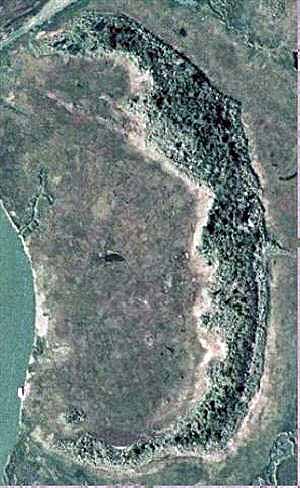Project 1:Atlantic & Burlington County Sites
75 – Pullen Island
Pullen Island is an ancient sand ridge developed by natural marine processes prior to historical records. Now part of the Federal Forsythe National Wildlife Refuge, Pullen Island has been returned to a natural, vegetated “upland” island not impacted by wave action for many decades. Up to the 1970’s several local families kept “beach houses” on the island that dated from the 19th Century. The US Life Saving Service also maintained a Life Saving Station on Pullen Island from which the staff launched marine rescues up until the early 20th Century. Following this activity the building was used by Rutgers University for decades as a research site for ornithological studies. All the buildings were destroyed by the wildlife refuge staff during the winter of 1977, in their effort to return the site to a natural status. The island sediment is pure fine sand, with the highest elevation in the form of a ridge at the eastern margin that curves around on both north and south sides of the island developed to face in the direction of incoming waves long ago. Core probing on the marsh surface east of the island show a level sand surface about 2 to 3 feet below the marsh deposits indicative of former open sand flat areas. Pullen Island was separated from the oceanfront by further sand accumulation during the 19th Century that generated what has become Little Beach Island, first documented in maps in 1883 in a sales prospectus promoting the island as a land development opportunity offering oceanfront lots at $600.00 each. The Panic of 1887, World War I, and the Great Depression intervened over the next 50 years to preclude the development, allowing Federal purchase in the 1930’s. |
|
|
|
|
